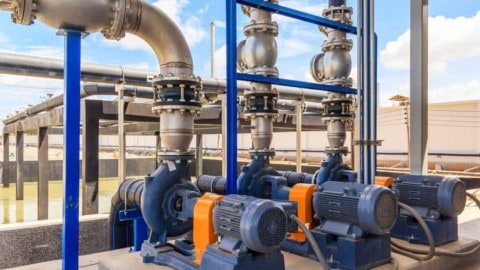Thiess has delivered a major milestone for Saipem Australia, principal contractor for the Santos GLNG Gas Transmission Pipeline Project by successfully tunnelling under the “The Narrows” off Gladstone to connect Curtis Island, QLD with the mainland.
The 4.3 kilometre under-sea tunnel has provided a conduit for installation of the pipeline without disturbing the marine environment.
Tunnelling commenced in April 2013 and the 100 metre-long, 277 tonne tunnel boring machine (TBM) has been operated around the clock on its journey to the tunnel reception shaft on Curtis Island.
Named Rose-Ella by the children at the local Rosella Park State School, the 4 metre diameter TBM also lined the tunnel as it went by installing more than 21,750 pre-cast concrete segments. A cement-based grout was injected behind the segment lining to permanently seal the tunnel which has a finished internal diameter of 3.4 metres.
In early February, the TBM “broke through” on Curtis Island to the cheers of representatives from Thiess, Saipem Australia and Santos GLNG who had gathered in the early hours of the morning to witness the historic achievement.
The tunnel forms part of Santos GLNG’s 420-kilometre gas pipeline route from its gasfields around Roma and Fairview to the gas liquefaction plant currently under construction on Curtis Island.
Thiess Managing Director Bruce Munro paid tribute to the relationship between the three companies.
“The Narrows Crossing has been a model of collaboration and Thiess is delighted to have applied its tunnelling expertise to such a significant project,” Mr Munro said.
Thiess’ General Manager Tunnelling, Steve Wille paid tribute to the crews who worked around the clock to steer the TBM to Curtis Island.
“I can’t speak highly enough of the team and what they’ve achieved, particularly in the last couple of months when the geotechnical conditions got very tough,” Steve said.
Tunnelling had to stop for a few weeks mid-journey for the crew to repair the cutter-head, an operation which is extremely difficult and complex. To access the cutter-head, 2.4 bar of compressed air pressure was required to prevent soil and water ingress. This meant repair crews had to go through compression and de-compression, similar to that required for divers.
“It can’t be understated how difficult the conditions were for those guys and I’m extremely proud of the way they fixed the cutter-head and brought the machine home,” Steve said.
The tunnelling operation has employed a team of 75 people and required a total of more than 420,000 man-hours to complete.
The TBM excavated approximately 55,000 cubic metres of earth which is being used by the Gladstone Regional Council to rehabilitate an ash pond associated with a coal fired power station.
The completed tunnel is now being stripped of services and thoroughly cleaned. It will then be flooded to provide buoyancy for the pipeline which will be installed by Saipem Australia.


















